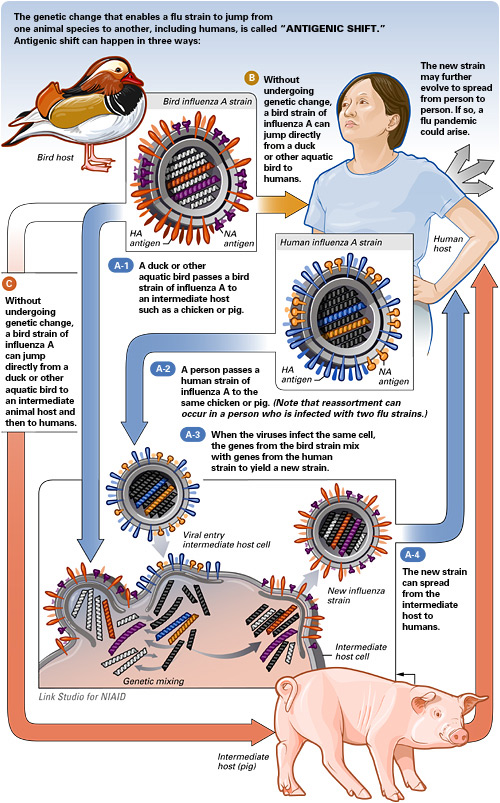Antigenic Shift
The genetic change that enables a flu strain to jump from one animal species to another, including humans, is called antigenic shift. Antigenic shift can happen in three ways:
Antigenic Shift 1
- A duck or other aquatic bird passes a bird strain of influenza A to an intermediate host such as a chicken or pig.
- A person passes a human strain of influenza A to the same chicken or pig.
- When the viruses infect the same cell, the genes from the bird strain mix with genes from the human strain to yield a new strain.
- The new strain can spread from the intermediate host to humans.
Antigenic Shift 2
- Without undergoing genetic change, a bird strain of influenza A can jump directly from a duck or other aquatic bird to humans.
Antigenic Shift 3
- Without undergoing genetic change, a bird strain of influenza A can jump directly from a duck or other aquatic bird to an intermediate animal host and then to humans.
The new strain may further evolve to spread from person to person. If so, a flu pandemic could arise.

Credit: This image is in the public domain. Please credit the National Institute of Allergy and Infectious Diseases (NIAID).
Illustrator: Links Studio.
Download: high resolution version of the Antigenic Shift illustration.
Veiw Antigenic Drift
back to top